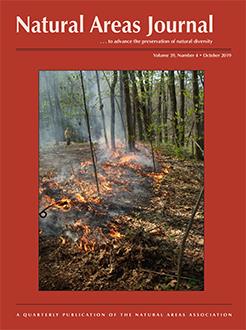Oak reproduction is often scarce or lacking in oak savannas under ecological restoration management, despite the fact that large canopy gaps created by the removal of invasive brush allow abundant sunlight to reach the ground surface. I conducted two experiments to investigate the effect of manipulating surface vegetation on the acorn-caching behavior of squirrels (gray squirrel Sciurus carolinensis; fox squirrel S. niger; or southern flying squirrel Glaucomys volans) and blue jays (Cyanocitta cristata). In Experiment 1, I created 10 × 10 m bare-ground patches prior to the time of acorn dispersal in restored white oak (Quercus alba) savanna and in adjacent unrestored brushy oak woods. I then compared oak seedling establishment in these bare patches the following summer to seedling establishment in unaltered tall vegetation. In Experiment 2, I used a combination of late-summer burning, tilling with an agricultural disc, and applying herbicide to create bare-ground patches adjacent to established oak woods, and then compared oak seedling establishment in these areas the following summer to that in burn-only, mow-only, and unaltered vegetation. In both experiments, oak seedling establishment was greater in areas denuded of ground vegetation. This agrees with previous research, which concluded that blue jays have a preference for storing acorns in areas of low to bare surface vegetation.
How to translate text using browser tools
22 November 2019
Management Techniques to Stimulate Oak Reproduction in Midwestern Oak Savanna Landscapes
Thomas B. Simpson
ACCESS THE FULL ARTICLE

Natural Areas Journal
Vol. 39 • No. 4
September 2019
Vol. 39 • No. 4
September 2019
acorn dispersal
acorn predation
Blue Jay
oak reproduction
squirrel




